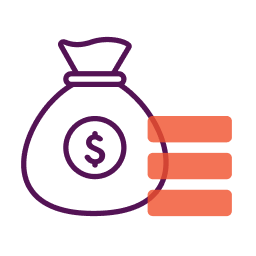


If you have employees or otherwise don’t meet these requirements, read our full article on forgiveness here.

Improve your business’s financial health profile to unlock better financing options — only at Nav.
The only platform that learns what your business needs and helps you become better qualified for it.
The material contained in this article is for informational purposes only, is general in nature, and should not be relied upon or construed as a legal opinion or legal advice. Please keep in mind this information is changing rapidly and is based on our current understanding of the programs. It can and likely will change. Although we will be monitoring and updating this as new information becomes available, please do not rely solely on this for your financial decisions. We encourage you to consult with your lawyers, CPAs and Financial Advisors.
The Economic Aid Act (the “stimulus bill”) that passed December 27, 2020 required the SBA to create a simplified one-page PPP loan forgiveness application form. The SBA met that requirement by updating and releasing a new version of the forgiveness application 3508S.
There are currently three forgiveness forms:
The latest and simplest form is 3508S and it may be used for loans of $150,000 or less. This form may be used for both first and second draw PPP loans, regardless of when you got your PPP loan, as long as it has not yet been forgiven. If you got both a first and second draw PPP loan you must use a separate form for each.
The SBA’s new online SBA PPP Direct Forgiveness portal allows borrowers with loans of $150,000 or less to apply for forgiveness directly with the SBA.
You’ll be asked for some basic questions about your business then asked to provide the following information:
There are certifications you’ll need to review and sign as well. There is an optional demographic questionnaire that will help SBA and others understand who got these loans. As with all PPP loans you will submit this form to your lender.
Let’s discuss aspects that may be confusing:
The purpose of PPP loans is to keep employees on payroll. Some people who are self-employed and who don’t have any employees may think they should put “zero” in the employee fields. It is never clearly stated by the SBA but our understanding is that even if you don’t pay yourself formal payroll, you may include yourself as an employee. (Check with your lender.)
Reminder: you don’t include anyone who you pay on a 1099 basis in your payroll. If you do count other employees, they must be employees you pay on a W-2 basis.
The clock for spending your PPP money starts the day your PPP loan funds are disbursed, or deposited into your bank account. When the CARES Act first passed, the covered period was 8 weeks. When the PPP Flexibility Act passed in June 2020, the covered period was changed to 8 or 24 weeks. And now with the Economic Aid Act (the “stimulus bill”) it is any period between 8 and 24 weeks – your choice. That applies to anyone whose PPP loan has not yet been forgiven.
Many self-employed individuals will want to choose a covered period that allows them to get full forgiveness based on money they pay themselves, and that ties into the next question:
Self employed individuals without employees will generally be using something called “owner’s compensation replacement,” to calculate the amount spent on payroll.
Owner Compensation is defined on the forgiveness application as:
Any amounts the borrower paid to owners (owner-employees (with an ownership stake of 5% or more), a self-employed individual, or general partners). For each individual owner in total across all businesses, this amount is capped at
(a) $20,833 (the 2.5-month equivalent of $100,000 per year), or
(b) the 2.5-month equivalent of the individual’s applicable compensation in the year that was used to calculate the loan amount (2019 or 2020), whichever is lower.
It sounds more confusing than it is so stick with us here.
If it’s just you in your business then you likely applied based on 2.5 times your average monthly net profit of your business as listed on your Schedule C line 31 for either 2019 or 2020. As of March 3, 2021, self-employed borrowers who filed Schedule C were given the option of applying based on Gross Income (line 7 of the Schedule C) or net profit (line 31 of the Schedule C.)
Since you had to reduce your annual net profit to $100,000 to calculate your loan amount, you already capped your potential owner’s compensation at $20,833 annually. So you should meet the first requirement. (Note that if you have multiple businesses this cap applies to all businesses. You can’t get $20,833 from one business and another $20,833 from a different business.)
The exception is businesses with a NAICS code starting in 72 who took a second draw loan based on 3.5 x net profit. See more about those loans below.
The SBA Forgiveness Interim Final Rule released in January 2021 then explains how you calculate forgiveness for owner’s compensation:
“Forgiveness is capped at 2.5 months’ worth (2.5/12) of an owner-employee or self employed individual’s 2019 or 2020 compensation (up to a maximum $20,833 per individual in total across all businesses). The individual’s total compensation may not exceed $100,000 on an annualized basis, as prorated for the period during which the payments are made or the obligation to make the payments is incurred. For example, for borrowers that elect to use an eight-week covered period, the amount of loan forgiveness requested for owner-employees and self-employed individuals’ payroll compensation is capped at eight weeks’ worth (8/52) of 2019 or 2020 compensation (i.e., approximately 15.38 percent of 2019 or 2020 compensation) or $15,385 per individual, whichever is less, in total across all businesses. For borrowers that elect to use a ten-week covered period, the cap is ten weeks’ worth (10/52) of 2019 or 2020 compensation (approximately 19.23 percent) or $19,231 per individual, whichever is less, in total across all businesses. For a covered period longer than 2.5 months, the amount of loan forgiveness requested for owner-employees and self-employed individuals’ payroll compensation is capped at 2.5 months’ worth (2.5/12) of 2019 or 2020 compensation (up to $20,833) in total across all businesses.
Note that employers with employees may include other costs for those employees in their payroll costs. Those may include amounts paid by the employer for group benefits such as health vision, dental or disability plans and retirement plan contributions. But if you are applying solely as a self-employed person with no employees, you miss out there. SBA guidance states:
For self-employed individuals, including Schedule C or F filers and general partners, retirement and health, life, disability, vision or dental insurance contributions are included in their net self-employment income and therefore cannot be separately added to their payroll calculation.
Also, you must exclude any qualified sick leave or family leave amounts if you claimed a credit under sections 7002 or 7004 of the Families First Coronavirus Response Act (FFCRA).
If you got a second draw PPP loan of 3.5 x average monthly payroll because your business is in an industry that starts with a NAICS code of 72, your calculation will be different. It should work out to approximately 15 weeks of owner’s compensation replacement. However, the current application and forgiveness guidance don’t mention this scenario. As soon as that guidance is available, we will update this story.
Do the math for your own situation and be sure to check with your accountant or advisors if you have questions.
We haven’t seen any guidance that says you must pay yourself a certain way (check or ACH, for example), or that your pay be an equal amount each week. The instructions on the 3508S form say:
Payroll costs are considered paid on the day that paychecks are distributed or that the Borrower originates an ACH credit transaction. Payroll costs are considered incurred on the day that the employee’s pay is earned. Payroll costs incurred but not paid during the Borrower’s last pay period of the Covered Period are eligible for forgiveness if paid on or before the next regular payroll date. Otherwise, payroll costs must be paid during the Covered Period.
For that reason, it seems it would be a good practice to write yourself a check from your business account, or use ACH transfer from your business account to your personal account to pay yourself. Whichever method you choose, keep good records in case the SBA later audits your loan.
According to the SBA, you must maintain records including “Documentation verifying the eligible cash compensation and non-cash benefit payments from the Covered Period consisting of each of the following:
No. If you’ve already applied for forgiveness for a previous PPP loan or are looking at older versions of forgiveness applications (or articles based on the previous ones) you’ll see a reference to the fact that you must subtract your EIDL advance (grant) from your forgiveness amount. The Economic Aid Act eliminated that requirement retroactively so you won’t need to do that anymore.
You will file for forgiveness with your lender. If your lender has sold the loan for servicing, you will apply through the servicer. Keep in mind that ultimately your lender will process your forgiveness application so you will need to follow their instructions.
To qualify for full forgiveness, payroll related expenses must account for 60% of the forgiven amount; in this case, that refers to owner’s compensation replacement. Eligible non-payroll costs cannot exceed 40 percent of the loan forgiveness amount. You may choose this method if you want to use the 8-week covered period (which will be too short to get full forgiveness based on owner’s compensation alone) or you want to use other expenses to qualify. Eligible non-payroll expenses include:
There are some specific requirements when it comes to forgiveness eligibility for these expenses, so if you are thinking of using them to qualify make sure you read the details in the latest forgiveness guidance.
If you are applying for forgiveness just based on owner’s compensation replacement (and not including other nonpayroll expenses) the SBA states that the 2019 or 2020 Form 1040 Schedule C that the borrower provided at the time of the PPP loan application must be used to determine the amount of net profit allocated to the owner for the covered period.
If you include nonpayroll expenses you must include cancelled checks, payment receipts, transcripts of accounts, purchase orders, orders, invoices, or other documents verifying payments on nonpayroll costs.
The Economic Aid Act increases the likelihood that self-employed individuals will qualify for full forgiveness based on owner’s compensation replacement. But if not, any remaining balance will become a loan at 1% interest for five years, unless the loan was made before on or after June 5, 2020. In those cases the repayment period is two years, unless the lender agrees to a longer repayment period.
There is no prepayment penalty if you want to pay it back right away. A small amount of interest may have accrued in the meantime and, if so, you’ll need to also pay that. If you keep the loan, the guidance suggests you should still spend those funds for authorized purposes.
If you are still confused about the PPP forgiveness application process, here are a few suggestions that may help:
This article was originally written on May 19, 2020 and updated on July 28, 2021.
This article currently has 139 ratings with an average of 4.5 stars.